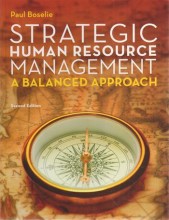Summary: Human Mind In The Digital World
- This + 400k other summaries
- A unique study and practice tool
- Never study anything twice again
- Get the grades you hope for
- 100% sure, 100% understanding
Read the summary and the most important questions on Human mind in the digital world
-
1 Week 1
-
1.1 Perception 1
This is a preview. There are 30 more flashcards available for chapter 1.1
Show more cards here -
What are the key aspects of Behaviorism and how has the view of the brain evolved according to the provided information?
- Behaviorism emphasizes classical conditioning (Pavlov) and reinforcement learning.
- B.F. Skinner, a notable behaviorist, devised the Skinner Box to show environmental control over behavior.
- It focuses on observable behaviors, ignoring internal brain activity.
- Contemporary views on the brain see it as actively processing and predicting information, not just passively conducting it.
-
What does the information processing model suggest about human cognition according to cognitive psychology?
- Describes human cognition as a simple, common framework.
- Equates individuals to information processors similar to computers.
- Envisions the cognitive process as input being converted to output via a programmed mechanism.
-
What is the sequence of cognitive processes leading to a response or action according to the given model?
- The process begins with a Stimulus
- The first cognitive process is Attention
- This is followed by Perception
- Next, Thought Processes occur
- A Decision is then made
- Finally, a Response or Action is taken as a result of the decision
-
What does the Information Processing Model illustrate in terms of cognitive function?
- Illustrates how information is processed through various cognitive functions.
- Starts with Sensory Processing (STSS) leading to Perception.
- Information then flows from Perception to Working Memory & Cognition.
- Working Memory & Cognition connect to Long-term Memory.
- Cognitive control and Motivation influence Attention Resources.
- The process continues to Response Selection and concludes with Response Execution.
- System Environment (Feedback) influences the process.
-
What role does attention play in information processing?
- Serves as a filter for perception.
- Requires monitoring, maintaining, and adjustment during a task, known as cognitive control.
- Engaging cognitive control is mentally effortful.
-
How is motivation linked to cognitive control in information processing?
- Determines the degree and amount of cognitive effort invested. -
What does sensory processing refer to and which organs are involved in it?
- Sensory processing is the detection of signals by basic sensory organs.
- The organs involved include:
- Ears (for hearing)
- Nose (for smell)
- Mouth (for taste)
- Eyes (for sight)
-
What are the two types of processes involved in perception and what characterizes each?
- Bottom-up perception involves sensory input being filtered and guided by attentional systems.
- Top-down perception is characterized by the influence of prior knowledge, context effects, and expectations.
-
Information processing: Essentially, a computer codes (i.e., changes)information, stores information, usesinformation, and produces an output.• For the brain, input is delivered via thesenses, transformed to electric neuralactivity, which is further used, processed,and stored in the brain.• The output (i.e. behavioral responses) mightbe, for example, to read what you can seeon a printed page.
- Computer codes information, stores, uses, produces output.
- Brain receives input, converts to neural activity, processes, stores.
- Outputs are behavioral responses like reading.
-
What happens to sensory signals in the context of conscious detection and processing of information?
- Sensory signals become consciously detected when attended to, entering into awareness.
- Information deemed irrelevant is either filtered out or made less intense, termed attenuation.
- Higher grades + faster learning
- Never study anything twice
- 100% sure, 100% understanding































